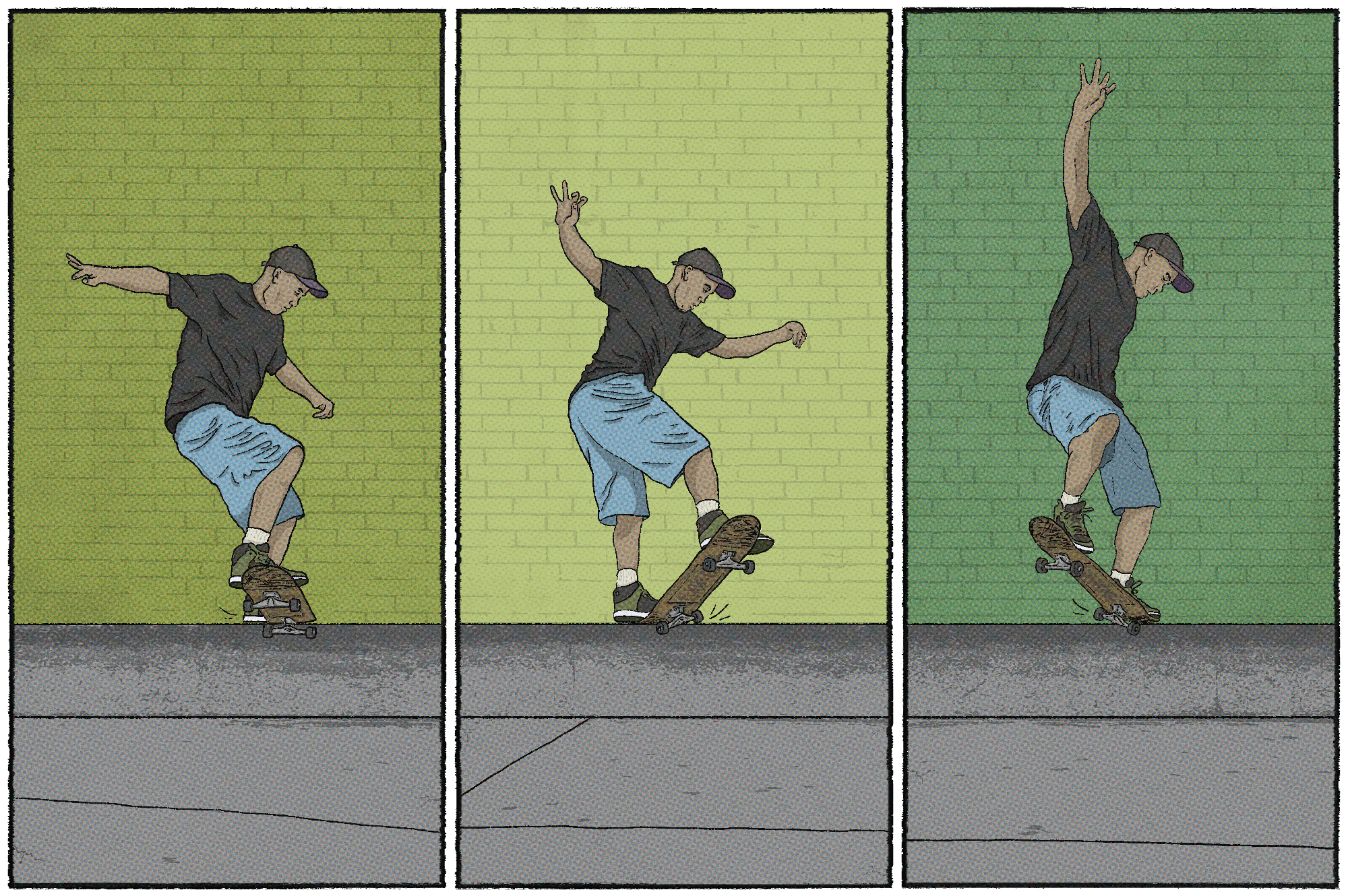
It was June 1993, and I was rolling across a street course at an evangelical skate camp in Ontario, Canada, on 38-millimeter wheels. Inching along, I scraped out a pressure flip, a trick that had tortured me the previous year, prompting Eddie Elguera—the camp’s resident pro—to let out an earnest “Yeah!” Part of my 13-year-old self was satisfied: I’d earned the praise of an actual professional skateboarder. But pressure flips were a relic of a bygone era—that era being the first half of 1992. So I thought that Eddie, who would have been about 30, was out of touch, and that I was a kook for doing one, even if, yeah, they were still kind of fun.
And that’s basically what skateboarding was like in the early ’90s. Doing a trick that was a month past its expiry date could get you vibed out of a spot, and the self-worth of teenage skaters worldwide hinged on how closely they could emulate a group of slightly older teenage skaters from San Francisco.
In the three decades since, obviously, skating has evolved, and today no trick will earn you a lifetime ban from your local curb. Pressure flips are cool again. Actually, their second act has lasted longer than their first did.
All of which got us thinking: How do trend cycles in skateboarding really work? How have they changed? Do they still matter? What confluence of people and events propels a trick from obscurity to ubiquity, and what signals that the moment is over?

The Genesis
Every trick starts somewhere, and while the pressure flip isn’t a foundational element of street skating, it did shift the course of street skating for a good six months, which was a long time in 1991 and ’92. Believe me.
Anyway, for the pressure flip, it all began in 1982, when Hans Lindgren, a Swedish freestyler, did it by accident. For almost a decade, skateboarding couldn’t have given less of a shit.
By 1991, though, the pressure flip had gained traction beyond freestyle contests. Chris Fissel, Ron Knigge, and others documented them in videos like New Deal’s 1281, and the trick started to reverberate.
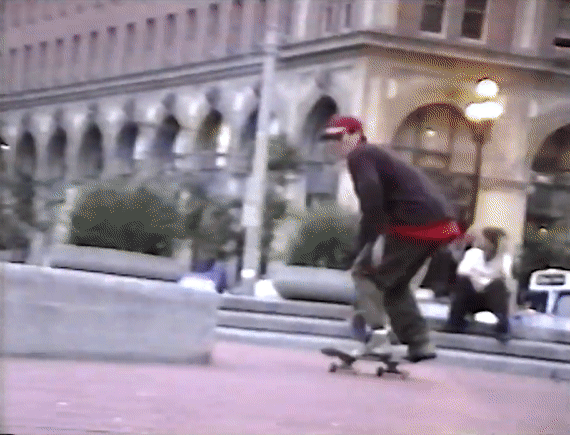
A Trend Begins
“A lot of people tried to do them in the early ’90s,” Lindgren says of pressure flips. “They had really small wheels, and the board’s just barely doing the flip.”
But before the pockets of skaters left in America would dedicate their days to the pressure flip, someone had to make it look good. And in late 1991 and early 1992, as wheels shrank and pants expanded, that wouldn’t be easy.
“Skating didn’t look the best, right?” says pro skater Erik Ellington. “But you can look back on Mike Carroll doing a pressure flip, or Jovontae Turner doing a pressure flip, and it looks good to this day.”
So, basically, it should come as no surprise that if skaters you think are cool do a trick, you’ll probably try to mimic them, even if the process is punishing and the product is lackluster. It also helps if the most basic variations of a trick aren’t beyond the abilities of the average skater.
The same rule applied to what was then known as a noseslide nosegrind—a trick credited to Sam Smyth—but is now called noseslide crooks. At the end of his part in Love Child, Chico Brenes ollied into a noseslide nosegrind fakie nosegrind across the C-Block at EMB. There was absolutely no way your hometown hero could muscle through that combo on an actual ledge, but almost any skater could plant his nose on a curb and jerk his board through a choppy combo.
That’s when a trick has almost run its course.
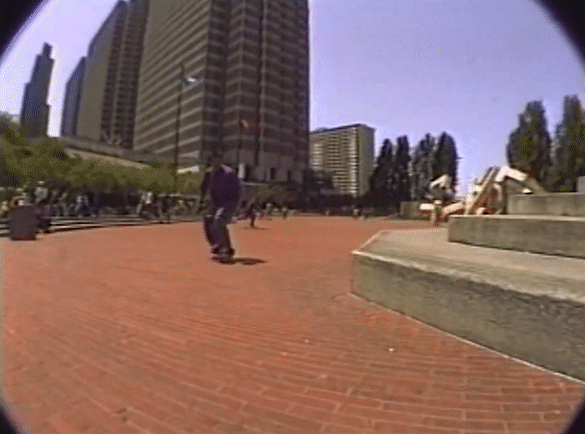
The End
By the summer of 1992, everyone in your scene could pressure flip. One dude I skated with could pressure flip late flip. Damon Byrd did pressure flip late double flips. As advanced as those tricks sound, scooping your board into one flip before stomping it into another didn’t look good. Neither did pressure flipping into frontside lipslides on curbs. In a matter of months, we’d come a long, misguided way from Jovontae at EMB.
So the pressure flip died. In fact, it was dead by the time Questionable came out that May; according to Jacob Rosenberg, Carroll was happy people thought a late pressure flip from his part was an inward heelflip because pressure flips were played out.
Pressure flips also had progression working against them. As skaters mastered flip tricks, they started to pop them over benches and other obstacles. A pressure flip was more of a scrape than an ollie, so you probably weren’t doing it over anything.
“skaters would sooner ollie into a crook or backside tailslide than frantically wiggle their boards into combinations of slides and grinds.”
“[The board’s] slithering around,” says Ellington. “And most of the time, it did that.”
And as curbs gave way to ledges, and lines became the norm, skaters would sooner ollie into a crook or backside or backside tailslide than frantically wiggle their boards into combinations of slides and grinds.
At one point, an influential pro could also kill a trick single-handedly. In 1997, inspired by Chad Muska and a few others, a good part of skateboarding decided that frontside flips and hardflips should rotate between the legs and look like they’re not flipping at all. I watched dudes get clowned and beat themselves up for doing both properly. But that summer, asked by Thrasher where he thought skating was headed, Caroll said he’d “like to see so-called pros be original…and definitely no more illusion flips: the new pressure flips that don’t even flip, the so-called hardflip.” Driving the point home, he added, “It wouldn’t even be that bad if they named it something else.”
But while that comment ended the trend, the clips that initiated it still hold weight.
“Look at one of Clyde’s hardflips, or Kareem doing a switch frontside flip,” says Ellington. “To this day, even though that might have gone out of trend at the time or years later or whatever, it still looks good, the way that they did it.”
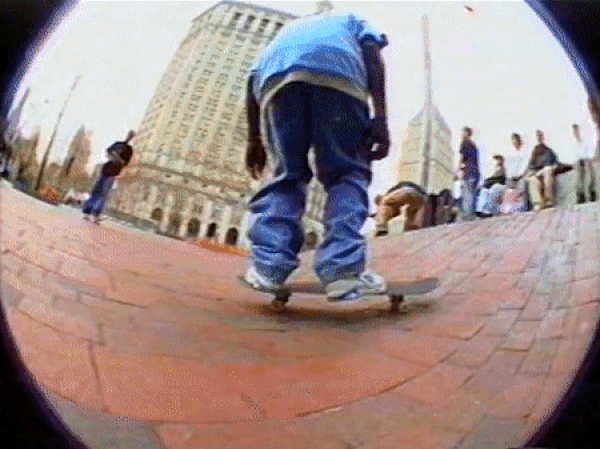
The Rebirth
At some point, every trend skating cycles through comes back—even pressure flips. For years, Nate Sherwood was carrying the torch alone, though the trick did resurface occasionally, with Ellington among the few to document for ads and video parts. Mike Carroll also threw a notable one in Fully Flared. But it took a handful of contemporary skaters to carry it from dork trick to legitimacy. Kader Sylla was one of them.
“He’s got a gift,” says Ellington. “He goes fast. He does a pressure flip, he catches it in a certain way that a lot of people can’t. It just looks good.”
Dylan Rieder played a similar part in reviving the impossible, a trick that had largely been abandoned after 1991, when Ed Templeton took it down stairs and into noseblunt slides. Ed did bring it back in the mid-’90s, but it was Dylan who introduced it to skaters reared in the 2000s via his impossible tailgrab in his “dylan.” part.
“Dylan Rieder played a similar part in reviving the impossible, a trick that had largely been abandoned after 1991…”
“And it was done in such a way that was paying homage to the way that Ed did it, but he was applying his own power and style and grace to it,” says Ellington. “And that made an entire generation of people reapproach the impossible where they didn’t think of it that way from before.”
After three decades, the noseslide crook also reemerged, this time, initially, with skaters like Guy Mariano taking it to bigger spots, but more recently by way of pretty much anyone who touches ledges including a variation in a part. That includes veterans like Eric Koston, who danced across curbs in North County San Diego more than 30 years ago.
“He was so good at all of that stuff,” says Ellington, so anything that’s kind of popular again now, he is really good at it, which is really funny.”
Skaters—pros, average locals, whatever—also continue to get better, which means that as tricks come back around, harder variations are unlocked. Flipping into and out of stuff came and went before nollie heelflipping to noseslide on a ledge could become common. But by 1999, Koston and Danny Montoya were bringing them to handrails. That principle applies to almost any trick that comes back.
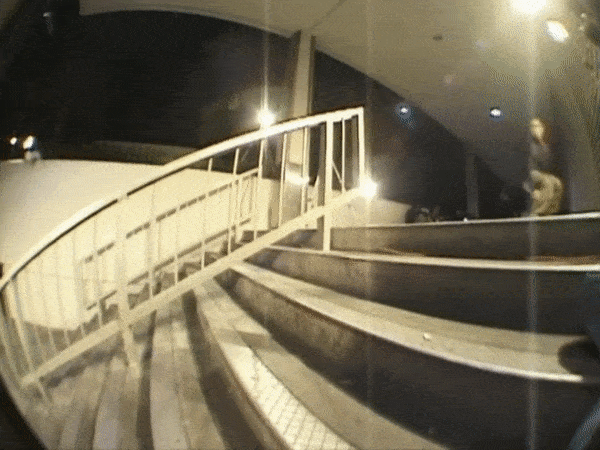
“You’re like, oh, people are just better now, so these tricks that were so hard then just look better,” says Ellington.
For his own part, Ellington was one of the first to bring back the bigspin, a trick that had fallen by the wayside around 1992, as more powerful flatground tricks became the standard. Ellington was initially inspired by Tim Gavin, who, like him, had grown up in Arizona. But it would be years before he’d revisit the trick.
“My career was happening in skating, and nobody had really done those tricks maybe down a set of stairs or onto a handrail or something like that. And I feel like it was kind of an opportunity for me to take something that I already thought felt good, and then to do something that was a little bit unique to what was happening.”
With skating playing out daily on the timeline, rather than monthly in magazines or yearly in videos, the trend cycle has accelerated. “Now, the day somebody does something, it’s either on Instagram or it’s a new clip or a part or whatever,” says Ellington. “And so I feel like it gives people the access to be able to learn and then ultimately popularize it. When it becomes super popular, and everybody’s doing it, not everybody wants to do it anymore.”
“at some point, no matter how dated or maligned it is, every trick will probably experience a second or third wind, if only in some hidden crevice of YouTube.”
Today, though, no matter the trick, someone’s probably doing it. And at some point, no matter how dated or maligned it is, every trick will probably experience a second or third wind, if only in some hidden crevice of YouTube. And though some of it may not sit well with the street Orthodoxy, we live in an age of Braille, rails on modern shapes, and switch inverts, and the guardrails have fallen.
“Aside from maybe a street plant or something, if you do it right, I don’t think there’s really much limitation on it,” says Ellington. “It’s who’s doing it, and they’re doing it in a certain way, and they’ve got speed and they’re flowing. I couldn’t write off anything. You could kind of do anything and get away with it.”
Related Posts
Comments
Popular
-
 RECONTEXTUALIZING ZAK ANDERS, ONE OF TODAY’S MOST MYSTIFYING SKATERS
RECONTEXTUALIZING ZAK ANDERS, ONE OF TODAY’S MOST MYSTIFYING SKATERS
"I don’t want to be this brutal punk that hates everything that people like, and I’m trying really hard to undo that."
-
 RARELY SEEN PHOTOS FROM READ AND DESTROY, THE BELOVED BRITISH SKATE MAG
RARELY SEEN PHOTOS FROM READ AND DESTROY, THE BELOVED BRITISH SKATE MAG
Check out early documentation of London's Southbank, vert ramps tucked into Lord of the Rings-level forests, and everything in between.
-
 NAVIGATING SKATING’S HIGHS AND LOWS WITH MATT MILITANO
NAVIGATING SKATING’S HIGHS AND LOWS WITH MATT MILITANO
Over coffee and cigarettes Matt talks prank shows, ABDs and his love for the VX.
-
 A CHAT WITH LUDVIG HAKANSSON, THE OLDEST SOUL IN SKATEBOARDING
A CHAT WITH LUDVIG HAKANSSON, THE OLDEST SOUL IN SKATEBOARDING
The man loves to read Nietzche, skates in some expensive vintage gear, and paints in his own neoclassical-meets-abstract-expressionist style.
-
 MEET THE SEATTLE ARTIST WHO DESIGNED A BACON ’N EGGS INSPIRED SKATEPARK
MEET THE SEATTLE ARTIST WHO DESIGNED A BACON ’N EGGS INSPIRED SKATEPARK
Breakfast-obsessed skaters rejoice!

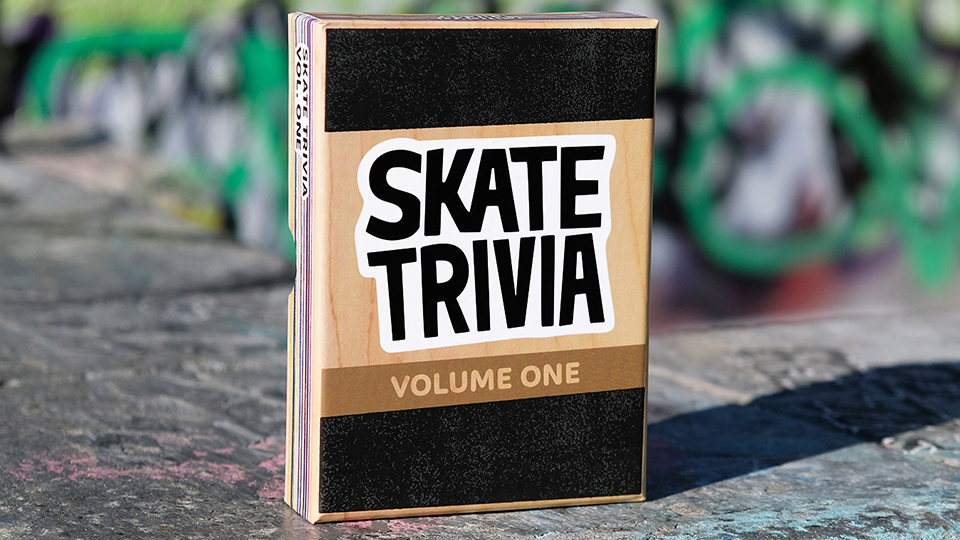

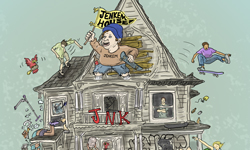
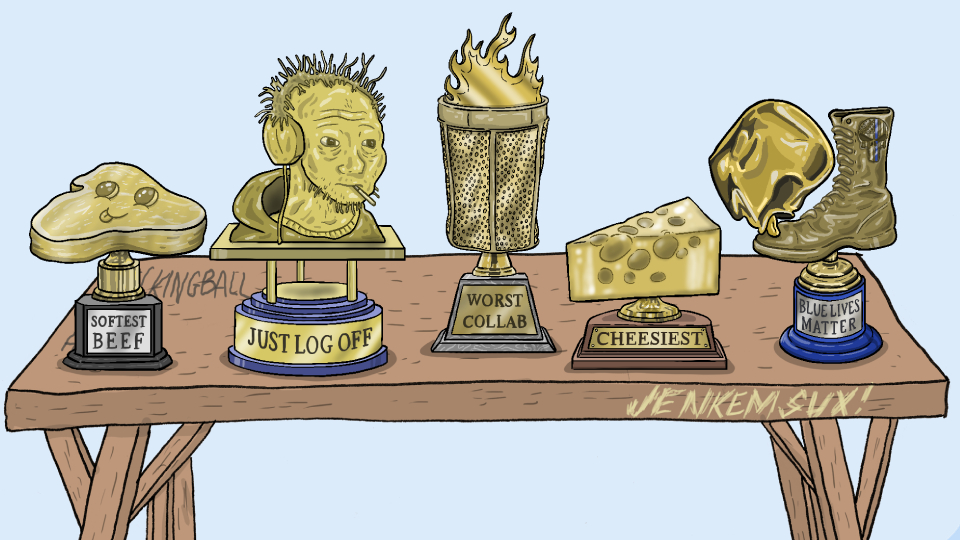


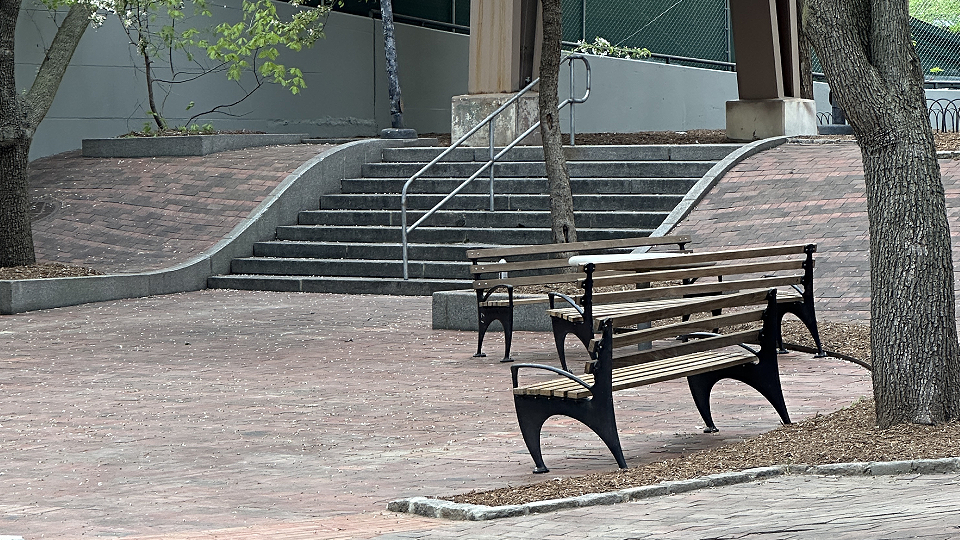
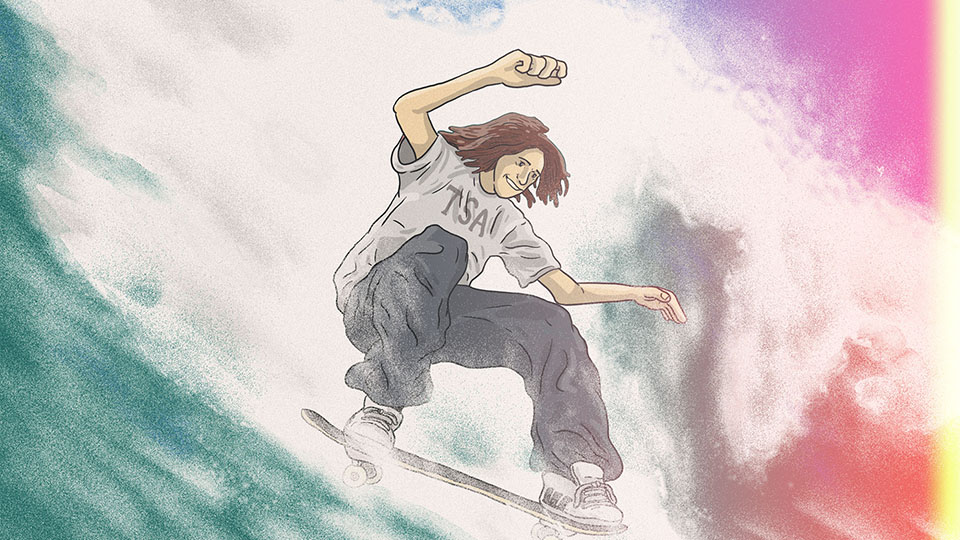
September 19, 2023 10:58 pm
Abe Bethel does the best one now
September 21, 2023 12:56 am
Backing it
September 23, 2023 11:28 pm
It was BATB that brought back the pressure flip, surely?
September 27, 2023 7:21 am
and today no trick will earn you a lifetime ban from your local curb.
What if someone shows up at your spot and starts pogoing on the street course?
I think thats at least vibe-worthy